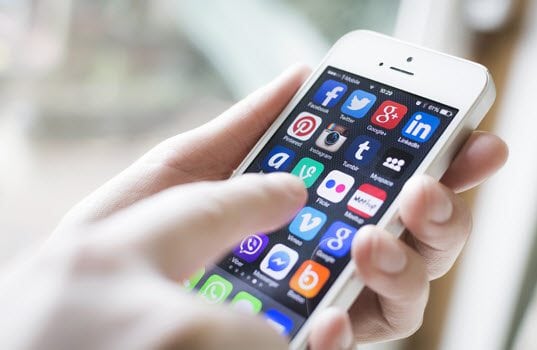By Keith Reid
Buy It Mobility Networks (BIM) describes itself as… a mobile/web ACH-based payment and consumer engagement platform that promises to enable merchants to develop more meaningful relationships with their customers, generate incremental revenue growth, lower payment costs, dramatically reduce fraud rates, drive loyalty participation and create superior mobile and online buying experiences for their shoppers.
 The ACH capability can be integrated into a merchant’s or third party mobile payment app and loyalty program to facilitate low cost ACH transactions. This can allow the merchant to take some of the savings to drive customer-facing programs.
The ACH capability can be integrated into a merchant’s or third party mobile payment app and loyalty program to facilitate low cost ACH transactions. This can allow the merchant to take some of the savings to drive customer-facing programs.
In October of 2017, it was announced that P97 Networks and Buy It Mobility Networks had struck a deal with customer Phillips 66 to provide ACH based payment and consumer engagement services at Phillips 66®, Conoco® and 76® branded locations. The program uses BIM’s technology to expand the capabilities of P97 Networks’ PetroZone® Mobile Commerce.
“U.S. consumers and merchants are increasingly demanding ACH at the point of sale, which is important for the future of mobile commerce; BIM is leading the charge and is the best platform we have seen in the marketplace,” said Don Frieden, President and CEO of P97 Networks. “By collaborating with BIM, PetroZone will help make the company’s vision of a frictionless, safe, paper-free check-out process a reality.”
A similar deal was announced in October with Hatch Loyalty, which empowers fuel and convenience retailers to build a configurable customer engagement and loyalty program on the Hatch platform.
“We believe in creating a solution where everyone wins. With the ease and convenience of BIM’s commerce platform paired with our personalization capabilities, we’re bringing a solution that will immensely benefit the fuel and convenience store space on many fronts,” said Hatch CEO, Dan Gloede.
FMN spoke with Adam Frisch, Buy It Mobility’s chief executive to get some details on his company’s technology works.
FMN: In a nutshell, what does you technology provide?
Frisch: We firmly believe that you have to have a dual value proposition for both the merchant and the consumer and that really hasn’t existed in mobile payments. That’s why you’re seeing the Apples and the Samsungs not really hitting the penetration levels that everyone anticipated. With ACH convenience is always key, and people seem to be irritated by the smallest things. You need a very low impact process for the consumer. But, you have to balance ease of use and security. So you got to make sure that you’re hitting that balance correctly and we think we are.
FMN: Describe ACH and how it is different from other payment methods such as debit?
Frisch: A debit card, or as some people call it the ATM card, is issued by the bank and it travels over Visa and MasterCard and a few alternative networks. With debit those cards enable you to access your checking account via that card going over the Visa and MasterCard networks. ACH is the network that connects all banks to each other. So when you write a check it clears through ACH and the same when you do direct deposit from your employer. That’s the platform that we’re leveraging. ACH is a tried and true tested platform from the 1970s, and I think in the last quarter it had $5 trillion dollars of volume.
A private label ACH platform hasn’t been available to merchants in the every day/every week/every month spend categories like petroleum/convenience stores, pharmacy, grocery, quick service restaurants and the like and that’s what we’re addressing. There’s a huge gap in the marketplace for merchants that have most of their transactions, on average between 60 and 70 percent, coming from cash and debit cards. And that is the exact opportunity in the marketplace that we are capitalizing on.
FMN: What is the merchant cost with ACH compared to the credit/debit networks?
Frisch: On average we’re 50 to 95 percent cheaper than what merchants are paying today versus branded network tenders–Visa, MasterCard, Amex, Discover—that’s a huge savings for them. That includes cash by the way. I don’t think there’s ever been a “go to” study on the cost of cash acceptance, but cash costs money for merchants to accept. Not only the obvious like calling the armored car to pick it up, but also theft and “losing” the money. It’s actually more expensive than debit. Not as expensive credit but pretty much in the middle according to most studies.
Being able to reduce one of a merchant’s highest costs is a big, big deal. But then also being able to leverage that into more loyal customers that come more often spend more and go in-store—well that’s the ideal scenario on the merchant side. For a gas station the value proposition can be use our tender and get 10 cents off a gallon of gas. On the customer side I’m ecstatic, I’m getting cheaper gas. And more often than not the gas station is also providing me offers to come inside and buy a candy bar for a discount or fill up my mug with coffee for free or get a fountain drink or whatever.
FMN: While ACH is becoming more common with consumer payment options—online and elsewhere—it is still extremely new compared to cash, credit and debit. Giving up that bank account information can be, I would imagine, an initial hurdle.
Frisch: Consumers sometimes think my bank account is so precious; I’m not going to give my bank account numbers. But every time you write a check you’re giving the cashier your bank routing number and your checking number. I don’t even think a lot of consumers understand that. What we’re doing is we’re making the enrollment process easier for a consumer to not only authenticate and validate that they are who they are, but they also have access to the bank account that they say they do and ultimately are making transactions from their phones.
FMN: The second hurdle would be, I imagine, getting the customer to take the extra time to set up the account. That seems to be a common issue with not only alternative payment options but loyalty programs and similar initiatives.
Frisch: We say our enrollment process averages about 40 seconds. And we are not asking the consumer for their social security number, which is very important. We’re also not expecting the consumer to know they’re ABA routing number or DDA credentials either. We’re able to make it easy on the front end because of what we’re doing behind the scenes on the backend. And so you’re presenting your phone to give us access to your bank account. We’re literally collecting thousands of data points on the back end to make sure that it is you. That this is your bank account that you have access to, and this is your phone or that you’re making the transactions on or your computer device. We’re also coaching the consumer saying this is why we’re asking for this information and here’s what we’re going to do with this information.
FMN: Getting back to that first hurdle, how do you handle fraud protection?
Frisch: On the backend are proprietary fraud algorithms that we developed that are just fascinating and completely differentiated and the leading edge. We’re able to have a high degree of confidence that we can make the consumer experience relatively easy but also protect them and their credentials from fraudulent activity, and that’s why I think we’re generating some really good press with some of the largest merchants in the country.
FMN: How does your solution integrate into a merchant’s app or loyalty program or website, for that matter?
Frisch: We are in essence a button on the merchant app and website. But as a private label program the button and everything that is consumer facing is the merchant’s brand, and that’s incredibly important. We’ve been described as a consumer engagement company that happens to do payments. Everything that is customer facing is the merchant’s brand and logo. What they’re able to do is basically take a shopping experience and make it much better by making it more valuable for the consumer because they’re getting either discounts or coupons or conveniences or what have you. They associate that better shopping experience with the consumer brand. This is not Siri getting the credit or PayPal getting the credit. No other brand is getting credit for the customer getting 10 cents off a gallon of gas.
FMN: How easy is it for you to integrate with the various POS systems and loyalty programs in the market today?
Frisch: We don’t have to really get too far deep into the point of sale system, which I think is incredibly important. Three years ago we wondered how we were going to get into all these software platforms. We don’t really have to do that anymore because we just integrate with the merchant’s app. The app is telling us here is a transaction, do you approve and we send a message back to the app. So that’s been part of the maturation process in the industry that I think has helped fuel our adoption.










